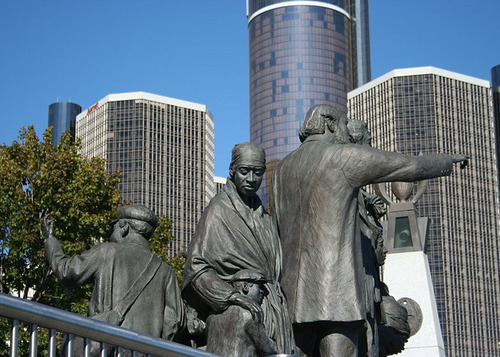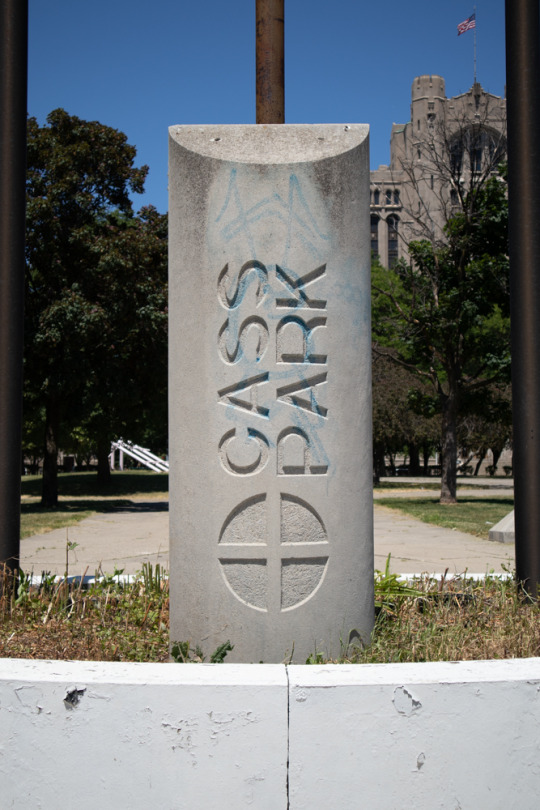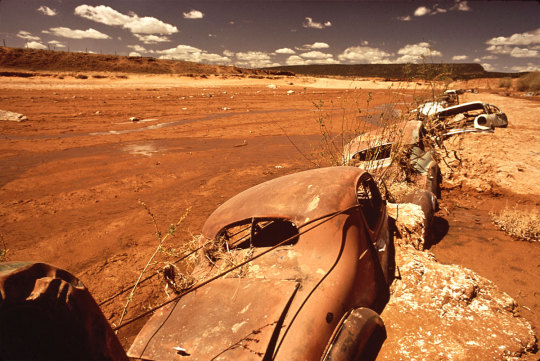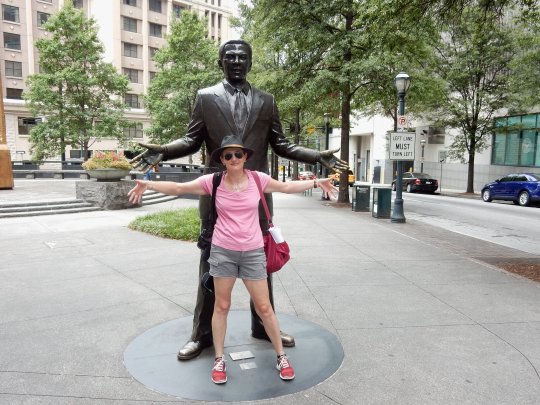#Construction Company New Orleans
Explore tagged Tumblr posts
Text

The Role of Technology in Modern Home Construction: Tools and Innovations Shaping the Industry
Technology makes building homes today smarter, quicker, enhancing our environment. It's due to the rapid growth of cities and the rising need for green living that firms like Construction Company New Orleans are embracing cutting-edge tools and ideas. They use 3D printing, smart gadgets, and energy-saving methods to revolutionize house construction. These innovations not only reduce cost and speed up construction but also value our planet's wellbeing.
Improved Planning and Design
Home construction has been transformed by Building Information Modeling (BIM). This tool lets New Orleans architects and builders make detailed 3D designs of houses. This helps them imagine, schedule, and execute projects without mistakes. BIM helps them work together effectively.
Virtual Reality (VR) and Augmented Reality (AR) are also now crucial in homebuilding. VR gives future homeowners a feel of their not-yet-built homes through virtual visits. Through AR, they can see the visual impact of their new home in the already existing environment. This assists in making sure the design is just right and there are no shocks down the line.
Advanced Construction Equipment
Modern advancements, including drones, have upgraded the gadgets seen at construction sites. Such devices are a popular choice among Contractor in New Orleans' to swiftly examine large areas from varied viewpoints. Additionally, drones allow for an early identification of any potential problems needing immediate attention.
Innovations like robotics and 3D printing play a key role in home building, making it more rapid and accurate. Robots lend a hand in recurring activities like bricklaying, hence quickening and making the construction process safer.
The introduction of 3D printing has revolutionized the field. It permits the construction of parts of a house or even entire structures with hardly any waste. This technological breakthrough aids construction firms in New Orleans to economize on resources and expenses.
Sustainability and Green Building
Because of the rise in eco-consciousness, technology's role in home building methods has transformed. Current homes incorporate solar panels and intelligent house systems for energy preservation and reducing costs. These savvy systems regulate temperature and lighting, adapting to the habits of inhabitants and conserving electricity.
Simultaneously, environmentally conscientious construction is promoted by newer techniques like modular and prefabricated building. Here, portions of a home are put together in an industrial environment and then assembled on the spot. This methodology minimizes excess, cuts construction periods, and encourages greener building habits.
Smart Homes and Automation
Living has become easier and more comfy with the integration of intelligent technology in our homes. New constructions regularly feature smart household gadgets like thermostats, security apparatus, and voice-command helpers. These advancements not only boost energy-saving efforts but also enhance home security, offering folks a solid grasp on their dwellings.
Conclusion
Home construction in New Orleans and other places is seeing new shapes from technology. Way better design gadgets and building gear to smart home setups, it's all about an improved, lasting future. Folks owning homes and those doing the building in New Orleans need to brace up for these shifts. They could then relish the plus points of smarter, more earth-friendly homes.
The Article "The Role of Technology in Modern Home Construction: Tools and Innovations Shaping the Industry" was originally posted Here.
#Construction Company New Orleans#Contractor New Orleans#Home Construction New Orleans#Home Construction
0 notes
Text
Being Elijah's Wife would include

Your flirtatious and magnetic confidence lingered in the memories of those you met, making you a topic of conversation long after the event had ended.
1 word to describe you would be genuine.
Elijah would never tell you, but even though it was too dangerous for a human to accompany him, he believed you made him look better and enjoyed having you around.
You are Elijah's pride.
Being Marcel's friend, you navigated the supernatural world with grace and charm.
Even when you're mad at Elijah, you can't help but believe in him. "Elijah has re-constructed diplomacy to bitchy insults and it still works, so… Yeah, I think he’s got this."
You may have not been a vampire, but you knew how to take care of one.
You were warm and approachable but commanding, a perfect balance that captivated those around you.
You and Elijah would work out together, finding entertainment in witnessing what a vampire could do.
Being the closest to Kol and Davina, you bridged the gap between the Mikaelsons and their extended family.
Being a mother figure to Kol, and of course Davina now that they're married.
You're just as much of a fashionista as he is, You wore only the finest. Picky is an understatement . No zippers,glitter, or anything that looked cheap to you.
Elijah was possessive of you since you were his greatest treasure.
Having children with Elijah after a thousand years of not being able to reproduce was a blessing and a testament to your unique bond.
You didn't care to insult anyone like your husband did, but your sharp wit was a force to be reckoned with.
Elijah is a sex god in your eyes- or anyone's of reason, and you're not shy about expressing it to his praise kink.
Elijah is busy, but you take on some of his responsibilities willingly, understanding the weight of his duties.
At first, he was afraid to ask for sex, but that notion quickly faded as he realized your desires matched his.
Elijah always buys you flowers on your monthly dates, a tradition that never fails to make you feel cherished.
He married the most gorgeous person in the world — you! And he tells you it's his biggest feat, a sentiment that never fails to bring a smile to your face.
You and Elijah share great laughs, finding joy in the simplicity of each other's company.
You teased him for losing his Viking demeanor to a suit during sex, and he's gotten less snobby trying to prove himself to you. Everyone has noticed, but no one will ever know why.
You both walk around the quarter at night, immersing yourselves in the timeless charm of New Orleans.
He's comfortable being a vampire around you.
You both read and write together, creating a world where words are your shared language.
After your showers, he braids your hair into Viking braids for the night or the rest of the day, a small intimate ritual.
And you braid his, a gesture that signifies the intertwining of your lives.
You guys cook together. Taking your time and talking about your day or upcoming day with him. The most relaxing part of your day as his Wife.
You knew him since you were a teen, so you feel like you know him in and out.
He's mostly submissive, except in bed. He tries to be, but he just can't keep his hands off you.
You didn't drink vervain because you felt that to be an insult to your husband, trusting him completely. You were an amazingly powerful sorcerer though.
Elijah fell inlove with you becasue of your love of Ideas, always having critiques, theories and your philosophical rants encouraging him to talk. How you listened to him like no other.
You created another type of magic for vampires in your studies of the supernatural because the human sacrifices weren't cutting it for you — pun intended.
When you first came back into his life, he was scared to love you because you were all he owned. Nothing Klaus had. By loving you, you taught him how to love himself. Congrats to you.
He has a secret breeding kink, One that you take advantage of. Along with his sir, Mr, and teaching kink. Nothing too wild, He's more of a romantic.
He grew a stubble for you when you told him you thought it made him look more like a DILF, embracing his role of a father.
Elijah doesn't want you on the tip of your toes to kiss him, so he lifts you effortlessly, creating a height equality you both relish.
He's your best friend, and he can say the same about you — a companionship that transcends time and immortality.
#kinda used my oc for help#the originals#the vampire diaries#tvdu#elijah mikaelson#tvd#elijah mikaelson headcanons#dad elijah mikaelson#elijah mikaelson imagine#elijah mikealson x reader#elijah mikaelson datenight#elijah mikaelson one shot#vampire#fluff#x reader#klaus mikaelson#klelijah
847 notes
·
View notes
Text
"The family’s entrepreneurial roots trace back to Calvin and Anthony’s father, Willie Mackie, and their uncle, James. Those two brothers started out as sharecroppers in St. Francisville then set off for New Orleans as teenagers in the 1950s in search of opportunity."
“My dad dropped out of school in the eighth grade to pick cotton. My mother went to a state-approved Negro high school,” Calvin Mackie said. “We grew up in a house with no books, but my dad started a roofing company with [first cousin] Earl’s dad in 1965 in the aftermath of Hurricane Betsy, and that pretty much changed the trajectory of our family.”
Article Dated: November 2020
#Anthony Mackie#Sam Wilson#Captain America#The Falcon#Captain America: Brave New World#Captain America Brave New World#CABNW#Marvel#MCU#Marvel Studios#Disney#Disney+#Falcon and The Winter Soldier#Fatws
20 notes
·
View notes
Text
i just added a lot of newbies and i'm itching to use them so i can see who i wanna keep. so, like for a one liner from one or a few, i'll come to you for who! list under the cut, this time with all info i have on them listed for ease of access but it's a little long, sorry.
crash cross, 32, straight, he/him, james marsters fc / drummer with a very slight substance abuse problem, he promises. will destroy himself for a good time. good at heart but bad in action.
cricket farrow, 26, bisexual, she/her, mallory bechtel fc / former child star and ‘kid detective’ who worked with her famous father solving fake cases until the show was cancelled when she was twelve. crashed out in her teens and got it back together in time for college, kind of. had enough money to go but nothing left afterwards. aspiring journalist trying to get her foot in the door with what little nepotism she can still access now that her dad is a washed up famous detective turned unemployed asshole. her mother, still a producer for other exploitative shows, never calls and she prefers it that way.
davie choi, 28, lesbian, she/her, jeon jong-seo fc / formerly a brainwashed contract killer. now being hunted down by the company that made her impossible to kill.
gisela meyer, 23-50, bisexual, she/her, madchen amick fc / witch who runs a little store in new orleans. adoptive mother to a group of younger witches that make up her coven. played at a number of ages depending on what best suits the plot, more tba.
heidi laslow, eternally 30, bisexual, she/her, rebecca breeds fc / tiny but feisty vampire. turned in the seventies when she was protesting and travelling around with her boyfriend at the time. her morals have waned a little over time, but she’s as good as she can be.
january visoka, 23/42, lesbian, she/her, eliza dushku fc / law student in her younger verse. lawyer in her older. can be played as either, more tba.
jeremy oliphant, 35, straight, he/they, kyle gallner fc / librarian in a small town. lover of true crime and cryptids. always investigating something and always doing it alone. always trying to quit smoking.
josephine van wyck (nee painter), 22/50, bisexual, she/her, jennifer connelly fc / small town girl turned model figuring herself out in her younger verse. bored housewife looking to dominate those she cheats on her husband with in her older verse. emotionally closed off, quiet unless she has something important to say.
kellan mills, 27, straight, he/him, dylan sprouse fc / mechanic. occasional getaway car driver, but he always says those days are over. general dumbass.
maude catlett, 35, bisexual, she/her, maya erskine fc / romance novelist who writes the kind of explicit scenes she’d probably never actually take part in. a bit of a recluse, really.
molly thaxton, 37, lesbian, she/they, lily gladstone / construction worker. in night school to eventually start her own business. grew up surrounded by men, but ended up quiet rather than rowdy.
oscar sato, 48, straight, he/him, hideaki ito fc / businessman, owner of a number of las vegas nightclubs. perpetual bachelor and occasional sugar daddy.
raphael baker, 34, straight, he/him, sinqua walls fc / app developer. made enough money to take care of himself and his whole family, so now he doesn’t know what to do with himself. more awkward than he looks.
rochelle yue, 29/52, bisexual, she/her, lucy liu fc / heiress, can be played in her younger or older verse. more tba.
sylvia ‘six’ minami, 27, lesbian, she/her, devon aoki fc / criminal, former and still occasional street racer. works for a boss she resents. '
vienna laurendeau, 25, bisexual, she/her, zaria simone fc / former ballerina, current postgrad student. possesses an almost sociopathic work ethic. intense, manipulative, beautiful. likes to come across as old money in her aesthetic, but her parents just got lucky when she was a kid. she’s determined to never let go of that luck.
yessica vidal, 21, bisexual, she/her, maia reficco fc / college student. reckless party girl. sweet at heart but her impulse control is always at a zero.
#indie rp#indie bi rp#indie lesbian rp#indie smut rp#i was feeling very creative okay pls support my dreams
12 notes
·
View notes
Text
Deadline Detroit | Slavery is Detroit's big, bad secret. Why don't we know anything about it?

Metro Detroiters love to celebrate their local history, especially when it involves the noble, magnificent and world-class chapters of the past: The auto industry. Motown Records. The Underground Railroad. Diego Rivera. Coney Islands.
On the other hand, local history has its crazy uncles. Those are chapters that might be fascinating and important, but they are hidden in the back room and rarely talked about. Henry Ford’s anti-Semitism, taking land from the Indians, the Free Press’ 19th Century racism and the auto companies’ early abuse of workers come to mind.
Then there is the granddaddy of all forgotten local history. The subject no one talks about, virtually ever. The most neglected topic of all.
youtube
Slavery.
Slavery in Detroit has remained an enormous secret. It is an essential chapter in Detroit’s 311-year story, but it has been pushed back into archives and covered up by decades of neglect and denial. Few people, even well-informed college graduates, know that slavery played a key role in the growth of Detroit, and wealthy Detroiters owned slaves for the first 120 years of the city's existence.
When metro Detroiters talk about slavery, they talk about black men and women picking cotton in Georgia and Mississippi because that is what students in southeastern Michigan learn in school.
Yet slavery is very much homegrown. What has been called the “national sin” is also Detroit’s sin. It is the origin of our racial crisis, our peculiar institution, our “necessary evil.” Slavery belongs to Detroit just like slavery belongs to Charleston, Monticello and New Orleans.
Many roads, schools and communities across southeast Michigan carry the names of old, prominent families that owned slaves: Macomb, Campau; Beaubien; McDougall; Abbott; Brush; Cass; Hamtramck; Gouin; Meldrum; Dequindre; Beaufait; Groesbeck; Livernois and Rivard, among many others.

Detroit’s first mayor, John R. Williams, the namesake of two streets in Detroit – John R and Williams – owned slaves. The Catholic Church in Detroit was heavily involved in slavery – priests owned slaves and baptized them, and at least one slave worked on the construction of Ste. Anne’s Church around 1800. The men who funded the Free Press when it was founded in 1831 were ex-slave owners, and the paper supported slavery during the national debate before the Civil War.
The work of slaves helped build Detroit. And just like in the South, slavery in Detroit was reinforced by violence. Slaves worked without any pay for their entire lives, under threat of the lash and death.
Owners used their power over slaves to steal their labor and enrich themselves. Slaves arrived in Detroit stripped of their identity, culture, family and often their name. They were frequently maimed from torture.
Slaves died, often young, and were buried in graveyards that were soon forgotten, and then paved over by later generations of Detroiters, and their bones remain underfoot in America’s blackest big city, and their stories continue to be unknown in a region where race always has been a consuming issue.
Slavery was as much a part of early Detroit as the fur trade. Most residents who could afford slaves owned them during Detroit’s French, British and early American periods, from the city’s founding in 1701 to the second decade of the 19th Century. In 1750, for example, toward the end of the French regime, more than 25 percent of Detroit residents kept slaves.
“Not surprisingly, Detroit’s slaveholders came from the wealthiest segment of French society and produced a disproportionate amount of the village’s grain and livestock,” writes Brett Rushforth in “Bonds of Alliance,” a new book about slavery in Quebec and the Great lakes area in the 17th and 18th centuries.
Rushforth’s book touches upon the subject of slavery in Detroit, and in so doing he helps raise the veil on the city’s hidden history. Another academic, the University of Michigan’s Tiya Miles, has begun researching the subject, and earlier this year she told NPR’s Michel Martin that slavery “had a multilayered aspect in Detroit.”
There are almost no physical reminders of slavery left in Detroit. But one artifact that remains is a scarred and cracked account book that has yellowed and brittle pages. It sits in storage in the Burton Historical Collection at the Detroit Public Library. The book belonged to William Macomb, the richest person in Detroit when he died in 1796.
Macomb owned Grosse Ile and Belle Isle and several houses and page after page of livestock, tools and furniture. Macomb also owned people. Listed prominently near the front of the book along with things like shovel tongs, saddle bags and goats, are the names of, or references to, 26 human beings: Scipio, Tom, Guy, Charlie… Only one, Jim Girty, had a family name. Together, the slaves’ total value was listed as 1,655 pounds in New York currency.

In his will, Macomb wrote: “I give and bequeath to my loving wife, Mrs. Sarah Macomb, for her own use, all my moveable estate wheresoever…my slaves, cattle, household furniture, books, plates, linen, carriages and my utensils of husbandry.”
I examined that book last week, with a librarian and photographer. It is stark. We acknowledged that it felt strange to look at a simple page with lovely penmanship that represents a national horror involving so much human suffering.
Detroit’s history of slavery is complicated by the fact that African Americans were not the only people held in captivity. Native Americans were also enslaved here, especially during the early decades of the 18th Century when the French ran Detroit.
Indian slavery pre-dated the arrival of Europeans, and it was a very different system than the form of black slavery that Europeans brought to North America. Indians did not consider slaves property, and in native culture slaves possessed symbolic value, and were used as gifts during trade and negotiations, and to take the place of dead warriors.
Eventually, though, Indian slavery mixed with European slavery and produced a hybrid form of bondage that played a major role in relations among Indians and Europeans in Detroit throughout the 18th Century.
Slavery was important, for example, in the interaction between men and women. Traders in Detroit’s early days used female Indian slaves as backcountry wives, both for companionship and as a way to ingratiate themselves with the women’s relatives, which enhanced the traders’ ability to do business with the Indians.
During the British era, one of Detroit’s most successful traders was John Askin, who had three children with an Ottawa woman named Monette, a slave he owned and later freed. Askin was known for his aggressive business tactics, including plying Indians with alcohol. His papers, also preserved at the Burton Collection, show he bought and sold several native and black slaves during his career.
“Rum and sex paved the way for Askin’s success,” wrote historian E.A.S. Demers.
“Sexual violence permeated the slave experience” in the Great Lakes, wrote Rushforth. Many women, he added, like Monette, eventually rose to social acceptance and freedom, but not before a “prolonged submission to what could be defined as serial rape.”
Whether male or female, life was harsh for slaves on the Detroit frontier. They generally slept on the kitchen floors of Detroiters’ homes, and the record is clear that owners did not hesitate to flog their human property when they believed discipline was called for.
Yet in slavery's scale, Detroit was not South Carolina. Detroit’s simple trading economy, small population and modest farms did not require large numbers of slaves, and slaves in Detroit generally lived in closer proximity to their owners than slaves in the south.
Slaves never exceeded 10 percent of the population in Detroit; in the south before the Civil War, slaves made up 33 percent of the population. In Detroit, Macomb was the biggest slave owner, with a couple of dozen slaves; in Virginia, Thomas Jefferson owned some 600 slaves in his lifetime. Jorge Castellanos, a former professor at Marygrove College, once wrote that Detroit was not a “slave society,” but a “society with slaves.”
Forgetting
Grosse Ile, once owned by William Macomb, is the largest island in the Detroit River. Residents have done a lot to keep alive the community’s long history. But no one knew anything about the Macomb family owning slaves until Joel Thurtell, a Detroit Free Press reporter, brought it to their attention while he was doing a story in 2007.
Denise de Beausset, who is Macomb’s great-great-great-great-great granddaughter, told Thurtell: “No, I wasn’t aware of them having slaves at all. That’s funny; you’d think there would have been talk about slaves running the farm. Nobody ever talks about it on our side. I wonder if it was out of embarrassment or it wasn’t politically correct. Nobody ever talked about slaves. I’ll be darned.”
I have two friends whose roots in Detroit go back to the French period of the early 1700s. When I told them their ancestors had owned slaves, they thought I was joking. One friend, who had researched her family’s history, was flabbergasted when I broke the news.
“NO WAY!” she said. “Wow! Nobody told me anything about that, but I guess they wouldn’t. I am just embarrassed. That’s interesting. Fascinating.”
They are hardly alone in their obliviousness. Students of local history could research Detroit’s past for years before they would stumble across evidence of slavery. Since the early 1970s, slavery in Detroit has been the subject of research by a small number of scholars, who wrote academic articles that were mostly read by other academics and advanced students.
One graduate student, Arthur Kooker, wrote his doctoral dissertation in 1941 at the University of Michigan on abolitionists in Michigan before the Civil War. In his preface, Kooker wrote about his surprise when he discovered slavery itself had existed in Michigan.
“As the work progressed one fact that seemed to require an exploration kept bobbing up,” he wrote. “Rooted deep in Michigan’s past was the very institution which had called the antislavery movement into being.”
Remembering
During the first years of the 21st Century, many Americans discovered the story of slavery in the United States, especially as it existed outside the south. Prodded by activists and historians, a number of institutions and individuals acknowledged their historic ties to slavery and other extreme racist behavior, and in many cases asked for forgiveness.

A partial list of those performing a self-examination, and often issuing an apology or moving for reconciliation, includes President Bill Clinton (on behalf of the United States); Brown University; Yale University; Harvard University; Wilmington, N.C.; New York City; Philadelphia, Miss.; Duluth, Minn.; Birmingham, Ala.; London, England.; various insurance companies; the Southern Baptist Convention; the U. S. Senate; the Hartford Courant, the Raleigh News and Observer; the Lexington, Kentucky, Herald-Leader; J.P. Morgan Chase and several other banks.
Ira Berlin, one of the nation’s foremost historians of slavery, wrote in 2006 that “slavery has a greater presence than at any time since the end of the Civil War.”
Slowly, the curtain has begun to rise across the country on slavery and other forms of historical racism. Most notably, the collective amnesia is disappearing that allowed the north to absolve itself of involvement in slavery while castigating the south. People are realizing that understanding slavery is central to understanding the origins of America itself.
Detroit’s selective memory, however, has remained intact. Almost nothing has been done to seek out the truth about the role of slavery in Detroit’s history. And that seems unfortunate in a region where the theoretical underpinning of slavery – racism – remains a paramount issue.
It’s not a happy story. It’s probably not a coincidence that we celebrate the uplifting saga of the Detroit and the Underground Railroad rather than the tremendously sad story of Detroit and human captivity. For a nation – and city -- built on the notion of freedom, to consider the idea that slavery was also a major part of the foundation is difficult and disillusioning.
But telling the truth about our history can be a start on telling the truth about today.
“Slavery is the ground zero of race relations,” Berlin has written. “There is a general, if inchoate, understanding that any attempt to address the question of race in the present must also address slavery in the past.”
► Related: Detroit Landmarks And Roadways, And The Slave Owners They Were Named For
#Detroit#michigan#Slavery is Detroit's big#bad secret. Why don't we know anything about it#slavery in Detroit#slavery in michigan#northwest ordinance 1812#michigan territories#Youtube
15 notes
·
View notes
Text
Excerpt from this story from Truthout:
The hurricane season is just getting started, but a powerful storm has already brought a round of toxic releases from a cluster of fossil fuel plants on the Gulf Coast. Multiple refineries and petrochemical plants reported losing power as Hurricane Beryl slammed into Texas as a Category 1 storm on Tuesday. Those outages force operators to “flare,” or burn off, excess gases, which can release cancer-causing benzene and other toxic pollutants directly into the atmosphere.
Freeport LNG, a liquefied natural gas (LNG) export terminal in Southeast Texas, previously suffered a massive explosion in 2022. On Tuesday, the terminal reported flaring during power outages caused by Beryl to state regulators. So did the Formosa Plastics Corporation, which is notorious for agreeing to a $50 million settlement in 2019 after dumping millions of plastic pellets into Texas waterways. Marathon Petroleum reported a “safe combustion of excess gases” at its refinery in Texas City, but the company did not disclose the volume or duration of the flaring.
Toxic flaring at fossil fuel plants is unfortunately common across the heavily industrialized region even in good weather, but power outages and flooding brought by intensifying storms can unleash extreme levels of pollution into wetlands and residential areas.
Shaq Cossé, a program manager at the Louisiana Bucket Brigade, an environmental justice group, analyzed reports submitted to state regulators on the flaring incidents in Texas.
Cossé said the latest flaring incidents in Texas should serve as a warning to federal regulators considering proposals to expand LNG export terminals in neighboring Louisiana, where an existing terminal in Cameron Parish is already disrupting local fisheries and sparking protests by residents. A separate terminal owned same company, Venture Global, is under construction in Plaquemines Parish south of New Orleans — a low-lying coastal area frequently hit by storms and hurricanes.
2 notes
·
View notes
Photo

PEOPLE’S POLICY PROJECT
by Kendall Dix
The Flint, Michigan, water crisis has dramatically illustrated poor people’s lack of access to clean drinking water in the United States. But beyond lead contamination, there are more ways this country denies people that basic human right. The inability to pay water bills has become a significant problem for poor people.

Even before the COVID-19 pandemic and accompanying economic downturn, an estimated 1 out of every 20 households, or about 15 million people, had their water turned off at some point during the year because of nonpayment.1 In New Orleans, more than 75 percent of low-income residents have water bills that industry analysts say are unaffordable.2 During the pandemic, an estimated 9,052 people died as a result of water shut-offs.3
Like all issues related to poverty, the problem of water affordability disproportionately harms Black people, making this a racial justice issue.4 The amount of household income spent on water is more than twice as high in majority Black cities as majority white cities.5

Most water for bathing, cooking, and drinking in the United States is provided by utilities, about 80 percent of which are publicly owned.6 Water utilities are funded by a combination of government money, user fees, municipal bonds, and private loans.7 Though household fees are often thought to discourage overuse, data show that demand for water is relatively fixed, and raising prices produces little reduction in usage.8 Furthermore, residential water use accounts for just 8.2 percent of overall water usage in the United States.9
The most effective and equitable solution to the affordability problem is to eliminate residential fees and simply fund water utilities entirely with progressive taxation. If governments are interested in reducing overall water consumption, there are a variety of other options such as physical infrastructure that limits the amount of water that flows through fixtures, water recycling, or limiting the largest users of water, which are farms and industrial facilities.

Two related, but distinct, problems characterize the term “water affordability”:
Poverty.
Many people in the United States have low amounts of income and no or negative wealth. This makes it difficult for them to afford their household expenses, including rent, food, and water utility bills.10 In addition to their inability to pay, poor people who have bad credit scores are often seen as risks to utilities, which force them to pay high deposits or sometimes even deny them water service altogether.11


(“Older Housing In The Black Community On Chicago's West Side.” U.S. National Archives / EPA. “Old Cars Serve as Water-Break on Navajo Reservation.” U.S. National Archives / EPA.)
Public Disinvestment.
Despite overall water consumption decreasing,12 people’s water bills are getting more expensive, in part because of decades of federal disinvestment from public infrastructure. Federal spending on water has dropped steadily since the 1980s.13 Utilities’ costs have risen, in part because of climate change,14 and those costs are passed on to the public through increasing rates.15 Private utilities, which serve about 20 percent of the population, exist to make a profit and have higher water rates than public utilities.16 As federal spending on water has fallen, private water utilities have been on the rise. From 2010 through 2020, just 12 large, for-profit water companies acquired 353 water utilities at a total cost of about $5.8 billion.17

Water rates function as consumption taxes that fund infrastructure projects, much like gasoline taxes help fund highway maintenance and construction.18 In theory, these taxes can be used to influence consumer behavior to decrease usage. In practice, households largely cannot and do not respond to increased water rates by reducing consumption.19 Replacing water bills with more progressive sources of funding would increase access and improve the income distribution without causing overuse.
Eliminating water bills not only ensures universal access for those with housing, it also lowers utilities’ costs by reducing the need for billing and collections staff. Fees and rates alone cannot maintain our water system; only about 17 percent of utilities say they can maintain existing service without additional funding sources.20

(“Public Playground on the Charles River, near Soldiers Field Road.” U.S. National Archives / EPA.)
Water utility costs can be broken down into two broad categories:

At present, capital expenses are often covered by loans taken out by utilities and repaid by the fees collected from water users. The main federal funding mechanism for drinking water is the State Revolving Loan Fund (SRLF), which provides low-interest loans to utilities. The SRLF provides useful financing for utilities across the country, but many smaller utilities struggle to pay those loans, and some states struggle to provide the required matching funds.
Water infrastructure did not always depend so heavily on loans. In the 1970s and early 1980s, the federal government provided significant grant money to water utilities. There are still a number of federal grant programs, including Water Infrastructure Improvements for the Nation Act (WIIN), Public Water System Supervision (PWSS), Tribal Public Water System Supervision, and Training and Technical Assistance for Small Systems.21
Congress should revive this approach and replace water infrastructure loans with grants. This would ensure that all utilities can afford to build out and maintain necessary infrastructure as well as eliminate the water rates that are used to directly or indirectly finance capital expenses.

Water utilities’ day-to-day expenses are currently distributed down to users through water bills. Replacing these charges with more progressive taxes would allow for the total elimination of residential water bills and result in a more equal distribution of income and consumption. Any level of government could do this. Municipalities could use property taxes to eliminate user charges, states could use state income or sales taxes, and the federal government could use the federal income tax. But if equality is the goal, it is worth noting that the federal tax system is currently much more progressive than state tax systems.22
This is not a new idea. Ireland does not charge residents for water and an effort to introduce charges in 2014 led to such immense backlash that the government scrapped them two years later.23 Some US cities have already begun experimenting with progressive water billing. For example, Philadelphia offers income-based water rates for those whose income is below 150 percent of the federal poverty line.24 Though this is good because it caps the amount any one household pays for its water bill, only households that apply are enrolled in the program. There are poor households that would qualify but are not receiving the benefit because they haven’t filled out the paperwork. Eliminating rates and fees altogether would be more effective.

(Continue Reading)
#politics#the left#peoples policy project#water#economic inequality#poverty#infrastructure#progressive#progressive movement#social democracy#democratic socialism#socialism#capitalism#economics#long post#long reads
21 notes
·
View notes
Text
Westward Ho! Cincinnati Men Caught The California Gold Fever In 1849
It took a long time in 1848 for news to travel from California to Cincinnati. Gold was discovered at Sutter’s Mill, northeast of San Francisco, in January of that year, but Cincinnatians remained blissfully unaffected by gold fever until the middle of September.
By December 1948, Cincinnati merchants were placing advertisements in the local papers, offering camping and mining supplies to young men heading westward. As the new year of 1849 dawned, Cincinnati was fully possessed by visions of gold. Local newspapers printed dozens of announcements similar to this one, from the Commercial Tribune [23 February 1849]:
“A party of enterprising gentlemen of this city, completed their arrangements yesterday, packed up their trappings, and took passage on the steamer Chief Justice Marshall, for California. They design to sail from New Orleans, and either cross the Isthmus, or take the land route, via City of Mexico. The choice of these routes depends on contingencies. The party is composed of the brothers Moses, Mr. Collins, jeweler, and Messrs. Varney, Light, Vater, and the brothers Fagan.”
The Cincinnati Commercial [9 March 1849] reported on a company of 20 Cincinnatians setting out on the overland route to California, with a plan to cover expenses by selling gunpowder:
“They take with them one hundred kegs of powder, which on their arrival will be distributed, five kegs to each man – thus furnishing each a handsome capital to start on.”
In April, the “Independent Pacific Dispatch Company,” composed of 25 Cincinnati men, departed, also on the overland route. They loaded their pack mules onto the steamboat John Hancock, bound for Independence, Missouri, where they would commence hoofing across the continent.
As a major port along the Ohio River, Cincinnati not only witnessed local boys departing for the gold fields, but steamboats full of similarly determined young men passing through town. The Commercial Tribune [14 April 1849] was agog at the mass of virility floating westward down the Ohio:
“The tide of emigration to California is, in its extent, beyond all historical parallel; and will, in future times, stand prominent as the great event of the Nineteenth Century.”
Many of those adventurers, especially those from rural districts, stopped in Cincinnati to stock up on the supplies required to operate a basic gold-mining operation. Our shopkeepers were delighted to welcome the business. Gustav Sellin, purveyor of tin goods, advertised a gold-washing machine “of the most ingenious construction,” along with wash bowls, scoops and strainers. Philip Pike touted his “Imitation French Brandies, Holland Gin, Rum and Wines,” guaranteeing that a thousand-dollar investment in his beverages could be recouped for twenty times that amount in the thirsty gold fields. Miller Cornelius Sanders Bradbury boasted about his novel “steam-dried flour” warranted not to sour or get moldy for two years – ideal for the long trail westward.
Some Cincinnati businessmen just surrendered and joined the migration. Real estate mogul Thomas Hurst put a flour mill out near Sedamsville up for sale along with eight houses in the city. He was, as they say in the trade, a motivated seller. He closed his advertisement with this explanation:
“As I am making preparations for California, application should be made soon.”

Once folks arrived in California, they often discovered that panning for gold was not exactly as advertised. For instance, Benjamin Cory (Miami University Class of 1842, Medical College of Ohio Class of 1845) was busily engaged trading clothing to Native Americans in exchange for gold. Called to attend to a wealthy ranchero, Doctor Cory found himself trapped. In a letter home, Cory complained:
“My patient is quite smart this morning; he says I shall not leave him till all danger is over. ‘Charge what you please, Doctor,’ he says, ‘and it shall be paid; here is my ranch, with its horses, cattle, &c. &c. and I have a good large bag of gold.’ I am sorry, dear brother, that I ever had doctor stuck to my name; it is more trouble than profit; I am vexed to death; I tell people that I can get more gold in the mountains by digging and trading, than my conscience will permit me to charge my patients.”
Doctor Cory ended up doing okay for himself. The 1909 Miami University alumni directory notes that, before he died in 1896, he was elected to the first legislature of the new state of California in 1850 and had a distinguished medical career in Santa Clara and San Jose.
Joseph Talbert, a carpenter, who left Cincinnati in February 1849, wrote home that his traveling party of fifty had arrived safely in the gold fields. Talbert, however, after trying to mine gold for a couple of weeks, learned he could make more money as a carpenter, building cabins and gold-washing sluices than he could actually trying to find gold.
The Guysi brothers quit their jobs at B.F. Greenough’s lamp oil distillery on Main Street and endured a sea voyage of 160 days to round the tip of South America. They arrived in a San Francisco of 30,000 souls mostly housed in tents and suffering from dysentery. The only water available was polluted with copper, a spot of ground large enough to pitch a tent rented for $150 a month, and gambling was rampant. At least one of the brothers, Jacob, stuck it out; he was buried in the hills overlooking San Francisco Bay when he died at age 79 in 1906.
Joe Heywood had a solid career and sterling prospects here in Cincinnati. He was a butcher by trade, and regularly made the newspapers for the quality of his provender and the skill with which he decorated his shop. He was repeatedly referred to as a very handsome man who cut a dashing figure as a volunteer fireman. He was also known as a dependable “b’hoy” – a tough character – in the days when volunteer fire companies battled over which would put out the fire and collect the insurance money. Still, the Cincinnati Commercial of 9 January 1849 recorded the westward emigration of Heywood, along with Mathias Oliver, James Wilson, Alexander Burns and James McAlpin, all stalwarts of the “Rovers” fire company.
While most young men trudged west in hopes of sending pounds of bullion home, Heywood had no intention of digging anything once he got to California. Instead of packing a pick and shovel, Heywood had 1,500 cards printed to announce his business as a butcher and provision merchant. He seems to have succeeded admirably. After a sea voyage of 156 days, Heywood arrived in San Francisco and set up shop. A letter from a fellow firefighter reported that Heywood replicated the annual Cincinnati Christmas meat parade at his shop that December. Heywood himself wrote a long letter home describing his adventures aboard the ship and promising to write as soon as he could to “Lizzy.” He must have been persuasive. Joseph Heywood and Miss Eliza L. Hensley of Cincinnati were joined in matrimony on 1 July 1856 at San Francisco’s International Hotel.

7 notes
·
View notes
Text
Ironically, had I been invited, I wouldn’t have been driven to write this report. Private PR companies seeking to control access to information and public debate on behalf of the government about projects as consequential as the MBSD is dangerous — and is part of a larger concerning trend.
A growing number of these PR and consultancy companies work for clients seeking permits as well as the agencies responsible for issuing them, offering a one-stop-shop for expediting permits, with a team of communication specialists, consultants, engineers, and lobbyists at the ready. Two scoping hearings I attending this year held by the U.S. Coast Guard for floating LNG projects off Grande Isle, Louisiana, were moderated by third-party contractors who offer permit expediting services for industry.
Despite the region’s shrinking wetlands, the government continues to permit new LNG export facilities on the Gulf Coast, and is encouraging hydrogen and carbon capture sequestration developments, though they too will lead to further land loss. Such developments require new pipelines, and constructing pipelines in the wetlands is one of the main drivers of the state’s land-loss crisis.
Thirty miles south of New Orleans is where the MBSD construction will take place. A break will be made on the West Bank of the Mississippi River levee in Plaquemines Parish to allow for controlled releases of the river’s freshwater, laden with sediment and nutrients, through a two-mile-long concrete channel with a gate system re-connecting the river’s flow to the Barataria Basin.
The project’s supporters assert diverting the river to its historic path and unleashing the power of nature will result in the creation of 21 square miles of new submerged land in the basin’s wetlands over the next 50 years. This new land will create a natural barrier that will help protect the New Orleans metro area from storm surge, project proponents say. But scientist point out that the modern Mississippi River isn’t the same as it was 100 years ago — its land-building sediment load has been degraded due to the manmade water controls, and nutrient concentrations in the water are much higher. The project’s planners acknowledge that when the polluted river water is introduced into the basin’s brackish saltwater environment, increased initial land loss will occur as fresh water kills some of the marsh grass that holds the land together; however, a study determined that the land loss could be more substantial than the modelling for the project reflects.
The diversion project lies at the intersection of two crises: the state’s alarming coastal land-loss rate and the essential threat of climate change. This makes it ripe for disaster capitalism, a phrase Naomi Klein coined in her book “The Shock Doctrine: The Rise of Disaster Capitalism.” Following a destabilizing event, funding is made available with little debate for projects the public is told that will fix or mitigate issues that actually advance corporate interests.
...
In an op-ed about disaster capitalism, Klein pointed out that some of the same companies that profited off the Iraq war — Bechtel, Fluor, Halliburton, CH2M Hill, and Parsons — also profited in New Orleans after Katrina. CH2M Hill, now owned by Jacobs, is playing a role in the diversion project, as one of the many firms contracted by the CPRA. Those same companies, some of which have new names after being acquired, are all now also positioned play a role in the hydrogen and CCS market — an unsubstantiated climate solution that is being heavily unwritten with public funds. With billions on the table to combat the state’s land-loss crisis from restoration settlements funds from the BP oil spill, and billions more from the federal government to combat climate change, the disaster capitalist vultures are circling. Attending the groundbreaking offered me a peek at those utilizing a revolving door between public and private sector jobs allowing them access to the loot. Among the couple hundred attendees were government officials and an army of consultants, lobbyists, and PR specialist who service the oil and gas industry, at the ready to claim a piece of the pie.
...
The Environmental Impact Study prepared on behalf of the U.S. Army Corps of Engineers by GEC, a firm that offers engineering and consulting services, states that while there would be a positive impact of decreasing storm-related surge for communities in the greater New Orleans area, it would create increased flooding for communities directly south of the project in lower Plaquemines Parish that are home to minority populations. The report also concluded that the project will create economic hardship for those in the fishing industry who rely on the Barataria Basin, one of the country’s most productive estuaries. This is because the polluted fresh water entering the salt water environment will kill off most of the brown shrimp and oysters, as well as most of the Bottlenose dolphin that live there.
2 notes
·
View notes
Photo










Straw Hat Day
Straw Hat Day is observed on May 15 every year to celebrate this timeless wardrobe staple. Both men and women wear it in a variety of styles. From conical to Panama, the straw hat has stood the test of time, serving not only as a protection from the sun but a fashion statement. Today’s the day people celebrate this functional yet stylish hat. So, do you own one? If the answer is no, the day’s for you to finally own one and go about your day in style.
History of Straw Hat Day
The origin of Straw Hat Day is unclear. It started in New Orleans in the late 1910s. The day marks the beginning of summer, with people switching their winter headgears to the spring/summer ones. On the other hand, at the University of Pennsylvania, Straw Hat Day was observed on the second Saturday of May, the day being the principal spring celebration for undergraduates and a ballgame. The day was said to be widely accepted in Philadelphia that no one in the city dared wear a straw hat before the ballgame.
A straw hat, a brimmed hat woven out of straw or straw-like materials, is not only for protection but for style, and even it becomes a symbol. And it has been around since the Middle Ages. In Lesotho, ‘mokorotlo’ — a local name for the straw hat — is worn as part of the traditional Sotho clothing. It’s a national symbol. The ‘mokorotlo’ also appears on their flag and license plates. In the U.S., the Panama hat became popular due to President Theodore Roosevelt wearing it during his visit to the Panama Canal construction site.
Popular straw hats include boaters, lifeguards, fedora, and Panama. A boater or straw boater is a semi-formal warm-weather hat. It’s the type of straw hat worn by people around the time Straw Hat Day began. The boater is made from stiff sennit straw, with a stiff flat brim and striped grosgrain ribbon around its crown. It’s still a part of the school uniform in numerous boys’ schools in the U.K., Australia, and South Africa. Although men are seen wearing the boater, the hat is unisex. So, you can style it with your outfit, ladies.
Straw Hat Day timeline
5th — 15th Century The Middle Age
Traders sell straw hats and fashion fad trends.
20th Century The Mokorotlo
Basotho introduces wearing mokorotlo as part of the traditional attire at village meetings.
1906 Panama Hat Becomes Popular
President Theodore Roosevelt visits the Panama Canal, wearing a Panama hat.
1911 Straw Hat Day
People switch their winter hats to their spring/summer straw hats.
Straw Hat Day FAQs
Can you wear a straw hat at night?
You can wear it day or night as long as it’s not a formal get-together.
How long will a straw hat last?
If worn daily, a straw hat can last more than a year.
Who made the first straw hat in the U.S.?
The first documented Straw Hat was made by 12-year-old Betsy Metcalf in 1798.
Straw Hat Day Activities
Wear a straw hat
Tell people about the day
Purchase one
You must wear a straw hat to celebrate its day. The boater, fedora, or Panama, pick your preference. Celebrate the day and head off of the sun.
Shoot some photos of you wearing your favorite style of straw hat. Share them on your social media to let others know what day it is.
Straw Hat Day is also for those who haven’t got a straw hat. Choose your favorite styles of straw hats and buy one so that you can join the celebration.
5 Facts About Straw Hats You Need To Know
The Panama hat isn’t from Panama
Atalia Bis & Partners Company
It caused Straw Hat Riot in 1922
Coco Chanel loved it
Boater was originally a women’s hat
The hats were hand-woven in Ecuador and then exported to Panama in the 19th century.
They made a big straw hat with a diameter of 21 feet nine inches and was eight feet six inches high.
In New York, a fight broke out because some didn’t stop wearing straw hats after summer.
In the early 20th century, she made the boater hat fashionable for women.
Before being adopted as menswear, the boater was worn by women and children in the 1860s.
Why We Love Straw Hat Day
It keeps you cool
To try a new style
It doesn’t go out of style
Wearing a straw hat protects you from the harsh rays of the Sun and keeps you cool. Not only temperature-wise but style-wise too.
Whether you already own one or not, Straw Hat Day can be the day for you to buy a new straw hat. The options styles to choose from are numerous.
No matter the year, you can always wear a straw hat as part of your summer style. From boater to Panama or fedora to lifeguard, it never goes out of style.
Source
#White Sands National Park#Caribbean Sea#Graceland#New York City#Mojave Desert#Petrified Forest National Park#Painted Desert#Chicago#Indy#Indianapolis#Atlanta#original photography#travel#vacation#USA#landscape#countryside#citysccape#tourist attraction#landmark#Philipsburg#Sint Maarten#Straw Hat Day#StrawHatDay#NationalStrawHatDay#15 May
3 notes
·
View notes
Text
Blog 2
1. Three Possible Locations for Filming

New Orleans, Louisiana: New Orleans is engulfed in a rich cultural heritage, vibrant urban scenes, and historic architecture, providing a unique backdrop that can add depth to the film's narrative. Through the Louisiana Motion Picture Production Incentive Program, they offer a 25% refundable tax credit on qualified in-state expenditures, with an additional 10% credit for hiring Louisiana residents. Productions must meet a $300K minimum spend ($50K for local projects), and the program has an annual cap of $150 million, making it a cost-effective location with a vibrant, versatile setting. The qualified spend includes in-state wages, goods and services, and facility rentals directly related to production, offering tax credits on expenses incurred within the state.

New York City, New York: New York City's iconic urban environment offers a dynamic and recognizable setting, aligning well with the film's themes of adventure and exploration. It exudes a similar aesthetic to the film's initial location in Chicago, Illinois, with its rich downtown culture. The New York State Film Tax Credit Program offers a 30% refundable tax credit on qualified production costs, with an additional 10% credit on labor expenditures in select upstate counties. The program has an annual cap of $700 million and requires a minimum spend of $1 million for feature films and qualified spending such as in-state crew wages, set construction, and local rentals or services.

Toronto, Ontario Canada: Toronto's diverse urban landscape can convincingly represent a modern-day Chicago, maintaining the original film's metropolitan vibe in a new refreshing way. Offering a 35% refundable tax credit on eligible labor expenditures through the Ontario Film & Television Tax Credit (OFTTC), with an enhanced 40% credit on the first $240,000 of labor costs for first-time producers. The program has no annual cap or minimum spend requirement and covers qualified spending such as Ontario-based crew wages and in-province goods and services.
2. Research





A Real Pain: $3 million budget : Grossed $14.4 million: 380%
My Old Ass: $3 million budget: Grossed $5. 7 million: 90%
It’s for Your Own Good: $2.7 million budget: Grossed $3.4 million: 25.9%
It’s What’s Inside: $2 million budget: Grossed $17 million: 750%
The Man in the Hat: $1 million budget: Grossed $206,973: -79.03%
3. ROI of Ferris Bueller's Day Off (remake)
Budget: estimating to around $1.5 million
Gross: roughly $8.1 million when averaging the film comparatives gross revenue
ROI: 440%
4. Total Investor Payout
First Payout (120% of the initial budget): $1,800,000
$1,800,000 - $8,100,000 = $6,300,000
$6,300,000 / 2 = $3,150,000 (Investor) & $3,150,000 (Producer)
Total Investor Payout: $3,150,000 + $1,800,000 = $4,950,000
5. Keep Costs Down
To keep production costs down, I could use local food, lodging, and travel resources. For instance, instead of hiring out-of-town catering services, partner with local restaurants like a nearby diner or food truck to provide affordable meals for the cast and crew, reducing catering transportation costs. I also could streamline the production crew by hiring experienced professionals who can take on multiple roles, such as having a director who is also skilled in producing or a sound engineer who can double as an editor. This eliminates the need for extra crew members and cuts labor expenses. Additionally, I would focus on efficient location scouting by choosing suburban neighborhoods or public parks, such as local high schools or community centers, rather than more expensive spots like downtown Chicago. By minimizing the number of locations and selecting affordable venues, I can save significantly on permits and location fees while maintaining the film's authenticity. Combining these strategies will help me lower production costs while ensuring high quality.

6. Transferable Tax Credit
Transferable tax credit allows a production company to sell or transfer its tax credits to other businesses or investors in exchange for cash or other financial benefits. This helps production companies monetize their credits, especially if they cannot fully utilize them, thereby lowering production costs.
7. Benefits of Tax Incentives
Offering tax incentives benefits states by attracting film and television productions, which bring in revenue, create jobs, and stimulate local economies through spending on goods and services. It also enhances the state's reputation as a desirable filming location, potentially leading to long-term economic growth in the entertainment industry.
8. Break-Even-Point of an Investment of $15,000,000.00?
The break-even point being four times the budget would result in this investment's break-even point being $60,000,000.
0 notes
Text

The Role of Technology in Modern Home Construction: Tools and Innovations Shaping the Industry
The construction industry is going through the most revolutionary change ever with the development of technology in this sector. From robotics and artificial intelligence to energy-efficient materials and 3D printing, innovation is reshaping the way we design, build, and live in our homes. In our latest blog post: The Role of Technology in Modern Home Construction: Tools and Innovations Shaping the Industry, we take a closer look at how these pioneering technologies are not only speeding construction and making it more efficient but also paving the way toward sustainable and smarter living. To learn more, contact us at (504) 393-2445 or read our blog.
#Construction Company New Orleans#Contractor New Orleans#Home Construction New Orleans#Home Construction
0 notes
Text
How to Create an Engaging Trade Show Exhibition Booth Design in the USA
Prepare to stand out and create an impression among the overwhelmed sea of exhibitors with a unique trade show booth design. Your investment in trade show participation provides you with an excellent opportunity to contact potential clients and raise your brand profile. An aesthetically beautiful trade show exhibit or display design may boost your brand's appeal. However, they cannot be built overnight. Instead, they need meticulous preparation guided by innovative booth design concepts.
Trade shows are a powerful platform for businesses to showcase their products, connect with potential clients, and solidify their brand presence. However, an impactful exhibit design is the key to standing out in a bustling trade show environment. In the USA, where trade shows are vibrant and competitive, a thoughtfully designed exhibit can be the difference between making a lasting impression and blending into the crowd. A well-designed trade show booth in the USA can be the difference between blending into the background and becoming the highlight of the event. Here's a comprehensive guide to creating a standout exhibit that leaves a memorable impression.
Tailoring Your Exhibit to Captivate the Right Audience
Knowing your audience is critical to designing a custom trade show booth builder in the USA that resonates. Trade show attendees come from diverse industries and cultural backgrounds, each with unique preferences. Research what appeals to your target sector, whether it’s cutting-edge technology for tech enthusiasts or elegant, minimalist displays for corporate clients.
By aligning your trade show displays in the USA with audience expectations, you increase your chances of attracting and retaining visitors. A targeted approach enhances engagement and positions your brand as thoughtful and attuned to market needs.
Focus on Strategic Branding
Your booth should communicate your brand identity at a glance. Utilize consistent branding across all elements, including logos, taglines, and corporate colors. Clear messaging that highlights your brand's unique value is essential. Interactive features like touch screens, VR experiences, and live demonstrations transform your booth into an engaging experience. These features, implemented by a skilled trade show booth builder in the USA, can captivate visitors and leave a lasting impression on your brand.
Optimize Booth Layout and Space Utilization
Whether it’s a compact booth or a large island exhibit, efficient space utilization is critical. Open layouts encourage visitor flow, while designated zones for product displays, meetings, and storage maintain a professional appearance. Engaging a professional trade show booth construction company in the USA ensures your layout is visually appealing and functional. Their expertise can streamline the design and construction process, maximizing the impact of your exhibit.
Invest in Eye-Catching Visuals
In a trade show environment, visuals are your first impression. Use high-resolution graphics, bold colors, and concise messaging to capture attention. For the trade shows in the USA, cities like Las Vegas, Chicago, New Orleans, California, and Los Angeles consider culturally relevant design themes to connect with the audience.Strategic lighting can make your exhibit stand out. Highlight key elements like products or banners with focused lights, and use ambient lighting to create a welcoming atmosphere.
Incorporate Technology for Engagement
Incorporating technology, such as LED screens and video walls, can make your exhibit booth in the USA more dynamic and engaging. These tools effectively showcase product videos, testimonials, and other content that might be difficult to convey through static displays. Interactive features like touchscreens, simulators, or augmented reality elements create memorable experiences. These features in a tech-savvy market like the USA can set your booth apart from competitors.
Ensure Compliance and Accessibility
Trade shows in the USA often have strict guidelines for booth safety, design, and electrical setups. Collaborate with a company offering booth design & construction services in the USA to ensure compliance and avoid any last-minute surprises.
You can make your booth accessible by incorporating ramps, clear pathways, and user-friendly displays. Prioritizing accessibility ensures compliance with regulations and demonstrates your brand's commitment to inclusivity.
Conclusion
Designing an effective trade show booth in the USA requires a combination of creativity, strategic planning, and professional execution. From tailoring your exhibit to captivate your audience to incorporating cutting-edge technology and ensuring accessibility, every detail plays a role in your success.
For businesses who are looking to make a statement, partnering with an experienced trade show booth builder in the USA can make all the difference. These experts provide end-to-end services, including custom trade show booth design and construction services, ensuring your booth stands out in even the most competitive environments. With the right approach and support, your exhibit can attract the right audience, build meaningful connections, and elevate your brand’s presence in the vibrant world of USA trade shows.
0 notes
Text

You want a company that has years of experience
Top Notch Window Cleaning has decades of experience with post-construction window cleaning, and are true experts at this specialized service. We will clean your windows after your construction project so your new space is visually beautiful. The process is very different from routine window cleaning.
You want a company that has years of experience. You have found the right window cleaning company for your job.
During all phases of construction, we highly recommend following the guidance of the Glass Informational Bulletins provided by the National Glass Association (NGA) and the International Window Cleaning Association (IWCA). Here are links to those bulletins.
197 Palmer Ave Falmouth, MA 02540
Hyannis, MA 02601 100 Independence Drive Suite 7-480
Office: (508) 540-0002 Mobile: (508)-631-7007
[email protected] www.TopNotchWindowCleaning.net
#TopRated #TopNotchService #CapeCodWindowCleaning #FalmouthWinndowCleaning
0 notes
Text




West Technical High School (The Brick Lofts at Historic West Tech)
2201 W. 93rd St.
Cleveland, OH 44102
West Technical High School is located at 2201 W. 93rd St. in Cleveland, Ohio. West Tech’s story began Feb. 15, 1912, when the high school opened its doors. Cleveland was growing so fast that the school opened before it was finished. Students used ladders because the stairwells weren’t done yet, and there was no heat in the building at the time. It gave young people employable skills for good-paying, blue-collar jobs, while others left West Tech prepared for college and beyond. Just 10 years after it opened, West Tech was doubled in size in response to Cleveland’s growth. Changing demands for skilled labor required that West Tech add new facilities and programs including metallurgy, automobiles, welding and aviation. In 1924, the man most often associated with West Tech arrived to become its disciplinarian principal for the next 34 years — C.C. Tuck. During his tenure, West Tech’s enrollment grew to 5,000, making it the largest high school in Ohio. It had 141 classrooms, shops, laboratories, and offices in the 278,781-square-foot building. More than 100,000 students passed through the school’s halls during its 83 years. With the city’s population and school district finances in decline, the school board decided to close West Tech. The 1995 graduating class was its last. The high school was due to be demolished.
West Technical High School was added to the National Register of Historic Places on August 21, 2001. After nearly succumbing to the wrecking ball, West Tech got its second wind in 2003 as a luxury apartment complex called West Tech Lofts, 2201 W. 93rd St. Its second life got off to a rocky start. Renovation work by CityRise Development could not be completed, so The Orlean Co. and Marous Brothers took over in 2002. Then there was a revolving door of site management companies. It also took nearly eight years for tenants to fill the building. The $32.6 million conversion of the West Tech High School into the West Tech Lofts in 2003- 2004, preserved the architecture, charm, and character of the school; even the lockers adorn the corridors. Superior and modern amenities in both the common areas and the private residences, complement this one-of-a-kind renovation. Outstanding community amenities include garage parking, an exceptional fitness center, a spacious game room, a laundry center, a community room created from the original high school auditorium, and off-street or garage parking.
The Brick Lofts at Historic West Tech High is a must-see. It is a beautiful building, now a registered historic landmark transformed into 189 one-, two- and three-story luxury apartments, with exceptional architecture and construction qualities, unique loft-style apartment floor plans, and superior amenities. Beautifully planned suites with a variety of 1, 2 & 3 bedroom apartment floor plans are available to call home. Today, 100 percent of the apartments are occupied and it is under the new management of Colorado’s Monarch Investment and Management Group.
0 notes
Text
How to Create an Engaging Trade Show Exhibition Booth Design in the USA

Prepare to stand out and create an impression among the overwhelmed sea of exhibitors with a unique trade show booth design. Your investment in trade show participation provides you with an excellent opportunity to contact potential clients and raise your brand profile. An aesthetically beautiful trade show exhibit or display design may boost your brand's appeal. However, they cannot be built overnight. Instead, they need meticulous preparation guided by innovative booth design concepts.
Trade shows are a powerful platform for businesses to showcase their products, connect with potential clients, and solidify their brand presence. However, an impactful exhibit design is the key to standing out in a bustling trade show environment. In the USA, where trade shows are vibrant and competitive, a thoughtfully designed exhibit can be the difference between making a lasting impression and blending into the crowd.
A well-designed trade show booth in the USA can be the difference between blending into the background and becoming the highlight of the event. Here's a comprehensive guide to creating a standout exhibit that leaves a memorable impression.
Tailoring Your Exhibit to Captivate the Right Audience
Knowing your audience is critical to designing a custom trade show booth builder in the USA that resonates. Trade show attendees come from diverse industries and cultural backgrounds, each with unique preferences. Research what appeals to your target sector, whether it’s cutting-edge technology for tech enthusiasts or elegant, minimalist displays for corporate clients.
By aligning your trade show displays in the USA with audience expectations, you increase your chances of attracting and retaining visitors. A targeted approach enhances engagement and positions your brand as thoughtful and attuned to market needs.
Focus on Strategic Branding
Your booth should communicate your brand identity at a glance. Utilize consistent branding across all elements, including logos, taglines, and corporate colors. Clear messaging that highlights your brand's unique value is essential. Interactive features like touch screens, VR experiences, and live demonstrations transform your booth into an engaging experience. These features, implemented by a skilled trade show booth builder in the USA, can captivate visitors and leave a lasting impression on your brand.
Optimize Booth Layout and Space Utilization
Whether it’s a compact booth or a large island exhibit, efficient space utilization is critical. Open layouts encourage visitor flow, while designated zones for product displays, meetings, and storage maintain a professional appearance. Engaging a professional trade show booth construction company in the USA ensures your layout is visually appealing and functional. Their expertise can streamline the design and construction process, maximizing the impact of your exhibit.
Invest in Eye-Catching Visuals
In a trade show environment, visuals are your first impression. Use high-resolution graphics, bold colors, and concise messaging to capture attention. For the trade shows in the USA, cities like Las Vegas, Chicago, New Orleans, California, and Los Angeles consider culturally relevant design themes to connect with the audience. Strategic lighting can make your exhibit stand out. Highlight key elements like products or banners with focused lights, and use ambient lighting to create a welcoming atmosphere.
Incorporate Technology for Engagement
Incorporating technology, such as LED screens and video walls, can make your exhibit booth in the USA more dynamic and engaging. These tools effectively showcase product videos, testimonials, and other content that might be difficult to convey through static displays. Interactive features like touchscreens, simulators, or augmented reality elements create memorable experiences. These features in a tech-savvy market like the USA can set your booth apart from competitors.
Ensure Compliance and Accessibility
Trade shows in the USA often have strict guidelines for booth safety, design, and electrical setups. Collaborate with a company offering booth design & construction services in the USA to ensure compliance and avoid any last-minute surprises.
You can make your booth accessible by incorporating ramps, clear pathways, and user-friendly displays. Prioritizing accessibility ensures compliance with regulations and demonstrates your brand's commitment to inclusivity.
Conclusion
Designing an effective trade show booth in the USA requires a combination of creativity, strategic planning, and professional execution. From tailoring your exhibit to captivate your audience to incorporating cutting-edge technology and ensuring accessibility, every detail plays a role in your success.
For businesses who are looking to make a statement, partnering with an experienced trade show booth builder in the USA can make all the difference. These experts provide end-to-end services, including custom trade show booth design and construction services, ensuring your booth stands out in even the most competitive environments. With the right approach and support, your exhibit can attract the right audience, build meaningful connections, and elevate your brand’s presence in the vibrant world of USA trade shows.
For More Info visit website :- https://aarsexhibits.com/
0 notes